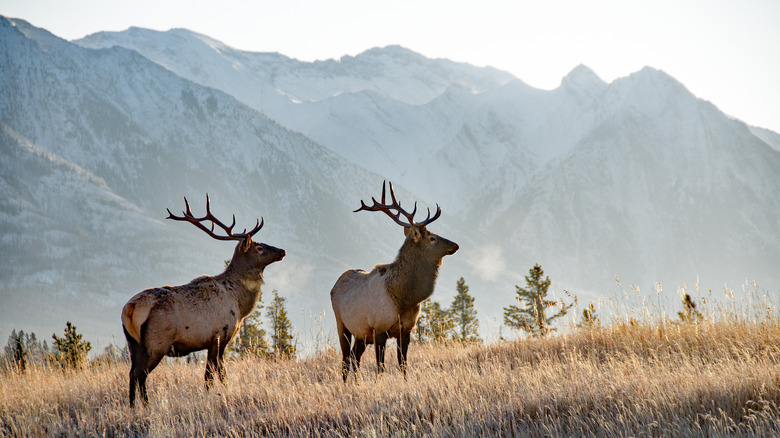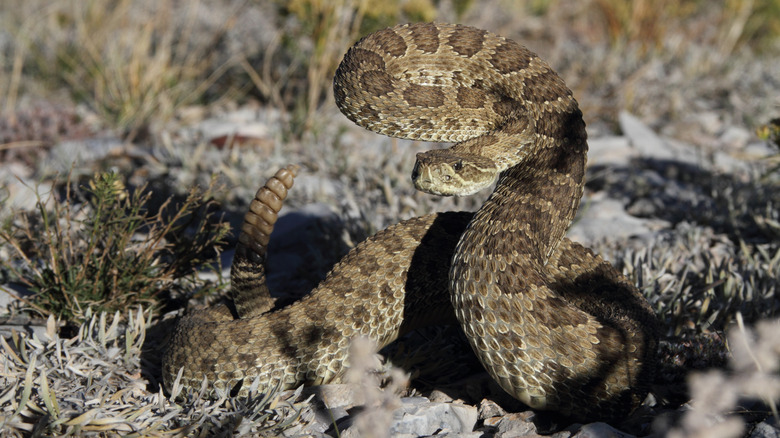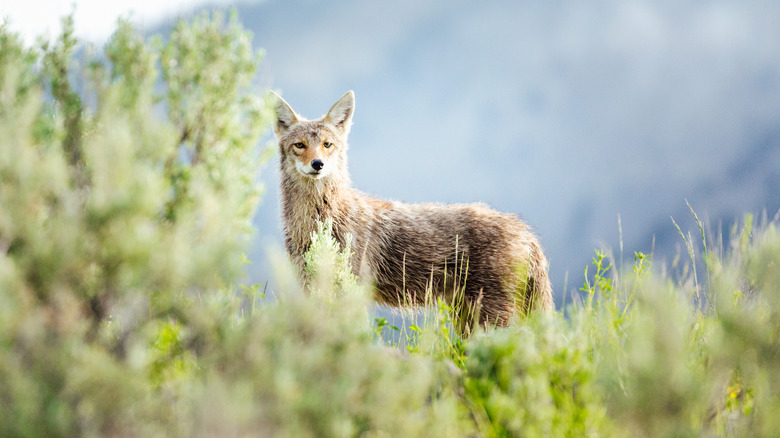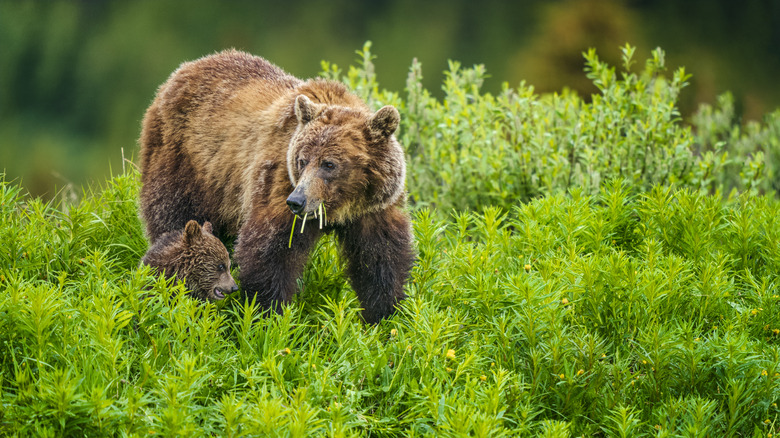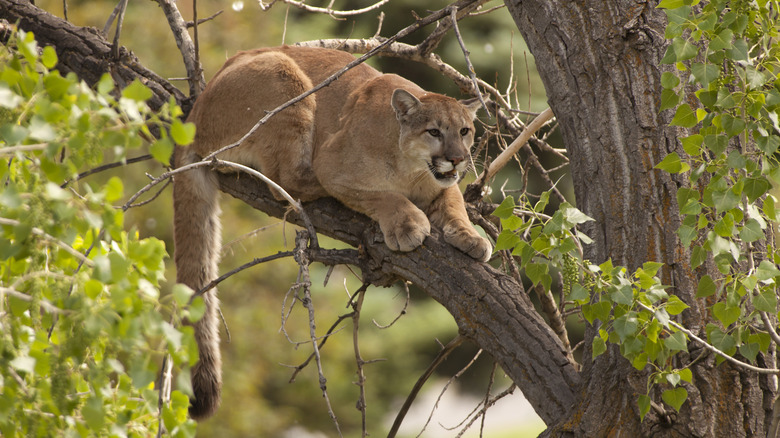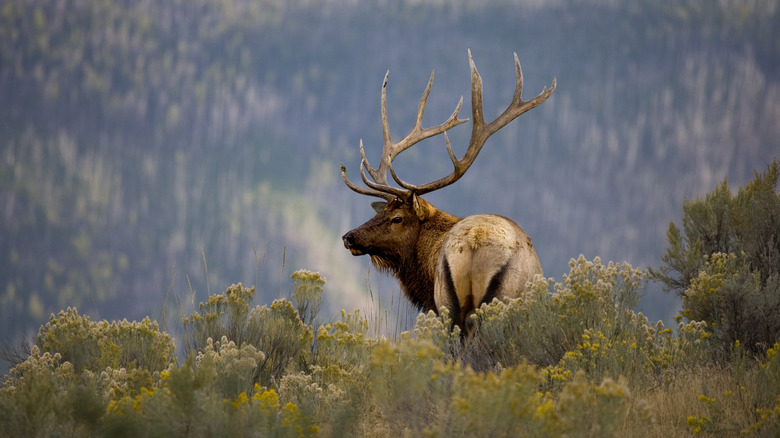5 Creatures To Beware Of When Adventuring In The Rocky Mountains
In the heart of the Rocky Mountains, amidst the rugged beauty of its untamed wilderness, lies a journey filled with wonder and discovery. It's this unique allure that solidifies the Rockies as one of the U.S.'s prime camping destinations. However, seasoned travelers who've ventured there will caution that these mountains harbor their fair share of peril.
Nestled within the breathtaking beauty of the Rocky Mountains is a world teeming with diverse wildlife, each species carving its niche in this unforgiving landscape. From towering peaks to lush valleys, every corner of this majestic range holds secrets and surprises, including creatures that demand respect and caution. Adventurers must remain vigilant, for encounters with wildlife are closer to inevitability than a mere possibility.
As adventurers set forth into the unknown, awareness and respect for these magnificent creatures are paramount, as animals in the Rockies are capable of unleashing peril. Whether facing the sinuous grace of a snake slithering silently through the undergrowth, the haunting calls of coyotes echoing through the night, or the chilling presence of bears and mountain lions, one must never forget the delicate balance between humanity and the untamed forces of nature that call the Rockies home. These are five creatures to beware of when adventuring in the Rockies.
Western rattlesnakes
Concealed within the rocky crevices and grassy plains of the Rockies lies the domain of the western rattlesnake, also known as the prairie rattlesnake. With its dark tail rings and signature rattle, this serpentine inhabitant commands respect and caution from those who dare to tread its territory.
The western rattlesnake is a master of camouflage, blending seamlessly into its surroundings with hues of earthy browns and dusty grays. Its stealthy demeanor belies its deadly potency, for with a single strike, it can inject venom potent enough to debilitate its prey. For those traversing the rocky terrain of the Rockies, encounters with the western rattlesnake are not uncommon, particularly during the warmer spring and summer months when these cold-blooded creatures emerge to mate and hunt. It is during these moments that hikers and adventurers must exercise caution, avoiding tall grasses and dense underbrush where snakes may hide.
Despite its ominous reputation, the western rattlesnake is not an aggressor by nature. In fact, it would rarely show up on a ranking of the world's most dangerous snakes. It prefers to retreat into the safety of its rocky lair rather than confront intruders head-on. If one does encounter a western rattlesnake, it's crucial to remain calm and back away slowly without making sudden movements. Attempting to provoke or handle the snake is extremely dangerous and should be avoided at all costs. Instead, give the snake plenty of space to retreat and alert others in the area to its presence.
Coyotes
Coyotes are highly adaptable creatures, capable of inhabiting a wide range of environments, from dense forests to open grasslands and everything in between. With its keen intelligence and resourcefulness, this elusive canine thrives amidst the rugged beauty of the Rockies.
Encounters with coyotes are most likely to occur in the early morning or at dusk when these nocturnal creatures venture out in search of food. While coyotes are not inherently aggressive towards humans, they can pose a threat, particularly if they feel threatened or cornered. They are particularly common in areas where human activity intersects with their natural habitat, such as campgrounds and picnic areas. This is why it's essential to protect your campsite from coyotes at night by minimizing attractants such as garbage and food, securing trash cans, and keeping pets on leashes.
Instances of coyote attacks on humans are rare, but they can occur. If you do encounter a coyote, it's essential to remain calm and assertive. Do not run or turn your back on the animal, as this may trigger a chase response. Instead, stand tall and confident and slowly back away. In the rare event that a coyote approaches you aggressively, make loud noises, throw objects towards it without aiming directly, and if necessary, use pepper spray or a loud whistle to deter the animal.
Black and grizzly bears
In the expansive wilderness of the Rocky Mountains, two iconic species of bears command both respect and caution: the black bear and the grizzly bear. Black bears, despite their name, can vary widely in color from black to brown to even blonde or cinnamon. While encounters with black bears are relatively common in the Rockies, they are not inherently aggressive towards humans and are more likely to flee than confront. Grizzly bears, also known as brown bears, are larger and more muscular than black bears, with a distinctive shoulder hump and a concave facial profile. Encounters with grizzly bears are less frequent than with black bears, but they can be more dangerous due to their size and territorial nature.
Encounters are most likely to occur in areas where bears are actively foraging for food, such as berry patches, riverbanks, or areas with abundant vegetation. To prevent encounters with bears, it's essential to practice proper food storage and disposal, keep a clean campsite, and make noise while hiking to alert bears to your presence.
If you come across a bear, it's essential to stay composed and refrain from making abrupt movements. Retreat slowly while speaking in a steady, assertive tone. Avoid running away or turning your back, as this could provoke the bear to chase you. In the unlikely event of a bear attack, defend yourself vigorously using whatever tools are at hand, like bear spray, branches, or rocks, targeting the bear's eyes and nose.
Mountain lions
Also known as the cougar or puma, the elusive mountain lion prowls as a shadowy sentinel of the high country. These solitary and stealthy predators are known for their sleek, muscular bodies, tan-colored fur, and distinctive long tails, which aid in balance and agility. With powerful limbs and sharp claws, mountain lions are formidable hunters, capable of taking down prey much larger than themselves.
To minimize the chance of encountering mountain lions, it's vital to remain alert and attentive to your surroundings when hiking or camping in their habitat. Watch for any indicators that may signal a mountain lion's presence nearby. Avoid hiking solo, particularly during dawn or dusk, and ensure children and pets are kept close. Generate noise while on the trail to announce your presence, and consider carrying bear spray or a whistle as additional deterrents.
If you come across a mountain lion, remain composed and avoid approaching, especially if it's eating or with young ones. Resist the urge to run and instead stand your ground, making yourself seem larger by raising your arms. If the mountain lion becomes aggressive, intimidate it by throwing objects. If attacked, defend yourself vigorously, targeting sensitive areas such as the eyes and nose. Always prioritize your safety and respond decisively when encountering a mountain lion.
Elk
The majestic elk, also known as wapiti, roam as icons of the Rocky Mountains. In fact, elk viewing is one of the Rockies' primary draws. These magnificent creatures are renowned for their large size and impressive antlers.
Encounters with elk are relatively common in areas where their habitat overlaps with human territory, such as meadows, forests, and open grasslands. While elk are not inherently aggressive towards humans, during the mating season (known as the rut), male elk, or bulls, can become more aggressive as they compete for mates and establish dominance within their herds.
To prevent encounters with elk, it's essential to maintain a safe distance and avoid approaching or attempting to feed them. If hiking or camping in areas known to be frequented by elk, be mindful of your surroundings and watch for signs of their presence, such as tracks, droppings, or flattened vegetation. If you happen upon an elk within close range, it's crucial to give them space and avoid startling or agitating them. Maintain a greater distance than you might expect, and if you observe any signs of agitation, such as raised hackles, a curled upper lip, or stomping feet, retreat gradually while keeping eye contact with the elk and speaking calmly in a subdued tone.
